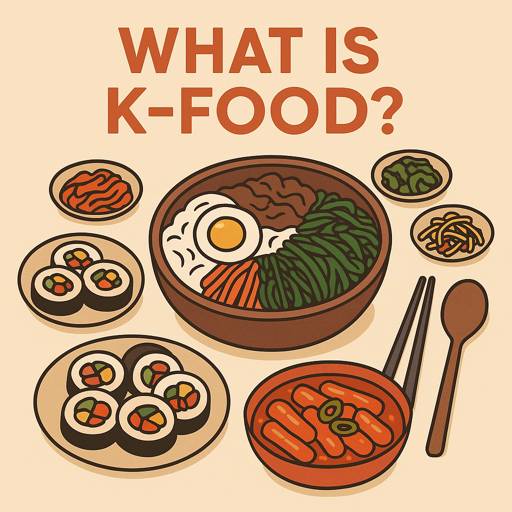Introduction: From Kimchi to Bibimbap — K-Food Goes Global
Korean food, often referred to as K-Food, is more than just a culinary trend — it’s a cultural ambassador. With its harmonious blend of bold flavors, vibrant colors, and health-conscious ingredients, K-Food has captivated taste buds worldwide. You might enjoy kimchi at a fine-dining restaurant in New York. Alternatively, you could grab Korean street snacks in Bangkok. K-Food has become a global phenomenon.
But what makes K-Food unique? How did it move from local kitchens in Seoul to global supermarket shelves? Let’s explore.
1. The Core Philosophy of K-Food: Balance, Health, and Seasonality
At its heart, Korean cuisine is built on the philosophy of balance. It balances flavors (spicy, sweet, sour, salty, and bitter). It also balances textures, temperatures, and even colors.
The traditional Korean meal is based on:
- Rice (bap) as the staple
- Soup or stew (guk or jjigae)
- Multiple side dishes (banchan) including fermented vegetables like kimchi
- Protein-based main dishes, often grilled or stewed
- Seasonal ingredients, focusing on freshness and function
Meals aim to nourish both body and spirit, rooted in Sasang constitutional medicine and um-yang (yin-yang) principles.
2. Iconic Dishes That Define K-Food
- Kimchi: Spicy, fermented cabbage that aids digestion and boosts immunity.
- Bibimbap: Mixed rice with assorted vegetables, meat, egg, and gochujang (red chili paste).
- Bulgogi: Marinated grilled beef with a sweet-savory flavor.
- Samgyeopsal: Pork belly grilled at the table, served with lettuce wraps and dipping sauces.
- Tteokbokki: Chewy rice cakes in spicy-sweet sauce, a popular street food.
Each dish represents more than taste — it tells a story about Korean history, geography, and social customs.
3. K-Food’s Rise on the Global Stage
The global popularity of K-dramas and K-pop has opened the door for international curiosity about Korean cuisine. Viewers who see characters eating ramyeon, jjajangmyeon, or fried chicken in K-dramas are eager to taste it themselves.
At the same time, the Korean government and food companies have actively promoted K-Food abroad. Korean marts, food trucks, and restaurants have expanded worldwide, and K-Food is now featured in:
- Michelin-starred restaurants
- Major grocery chains like Costco, H-Mart, and Lotte
- Cooking channels and influencer content
K-Food has also adapted to international tastes with vegan kimchi, gluten-free gochujang, and fusion menus like Korean tacos.
4. The Health Factor: K-Food as Functional Nutrition
Unlike some fast-food-dominated cuisines, K-Food emphasizes whole, minimally processed ingredients:
- Fermented foods for gut health
- Seaweed for minerals
- Tofu and legumes for plant-based protein
- Low use of dairy and added sugar
This health focus has earned K-Food a reputation among wellness enthusiasts and nutritionists. This makes it ideal for flexitarians, vegans, and health-conscious eaters.
5. The Social & Cultural Significance of Korean Meals
Eating in Korea is a communal experience, not just consumption. Shared dishes, table etiquette (like pouring drinks for others), and the act of cooking together at the table (e.g., hot pot, BBQ) strengthen social bonds.
Holidays like Chuseok (Korean Thanksgiving) or Seollal (Lunar New Year) are marked by special dishes. These include jeon, tteokguk, and galbijjim. These dishes reflect Korea’s deep connection between food and tradition.
Conclusion: K-Food as Cultural Diplomacy on a Plate
K-Food offers more than great taste — it provides a window into Korean values, lifestyle, and community. With its rising international profile, fusion possibilities, and wellness-friendly principles, K-Food is here to stay.
Try your first spoonful of kimchi stew. Explore fermented soybean paste for your own recipes. K-Food encourages everyone to eat well. It inspires people to live well and connect through culture.

답글 남기기